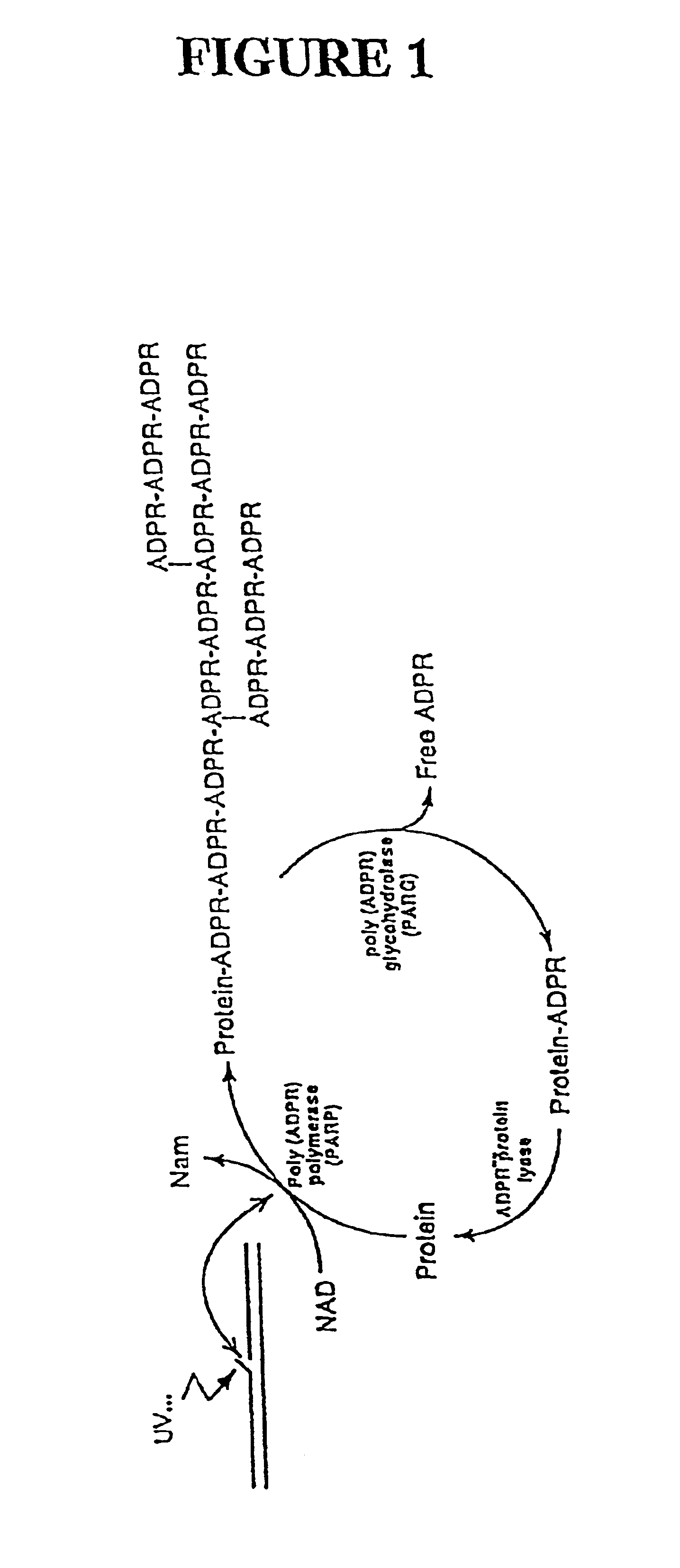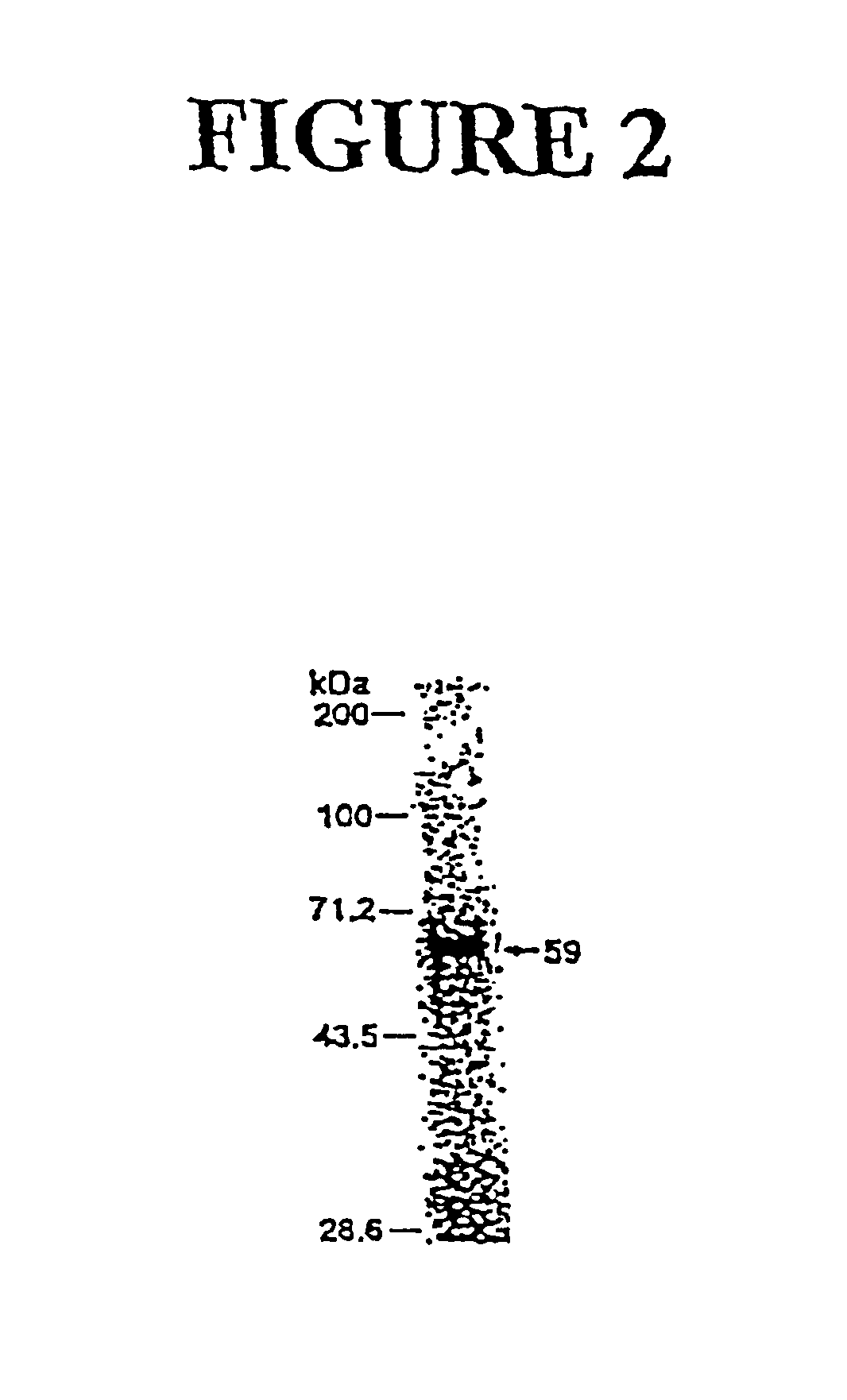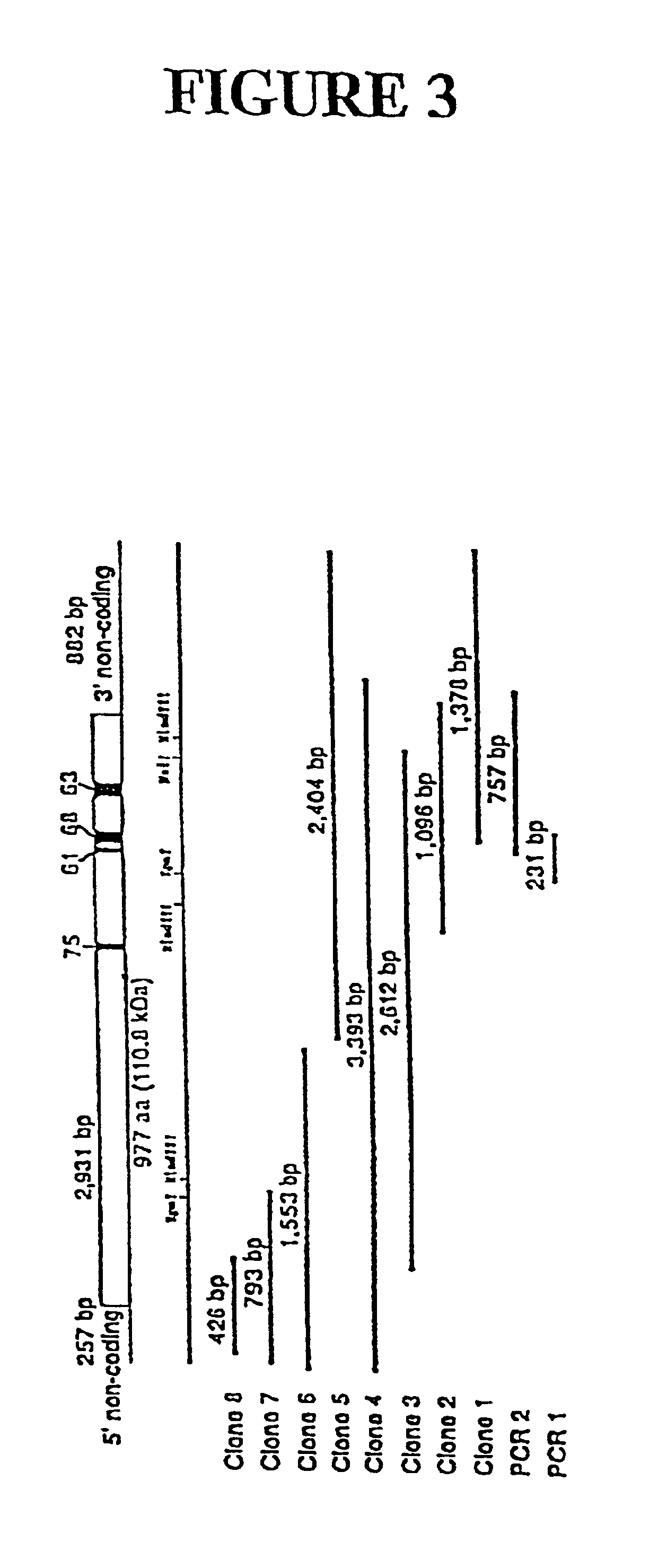Genes encoding several poly(ADP-ribose) glycohydrolase (PARG) enzymes, the proteins and fragments thereof, and antibodies immunoreactive therewith
a glycohydrolase and poly(adp-ribose) technology, applied in the field of poly(adpribose) glycohydrolases (pargs) and peptides having poly(adpribose) glycohydrolase activity, can solve the problems of malignant transformation, cell death by senescence (aging), necrosis or apoptosis, and energy depletion
- Summary
- Abstract
- Description
- Claims
- Application Information
AI Technical Summary
Benefits of technology
Problems solved by technology
Method used
Image
Examples
example 1
Purification of Bovine PARG
[0132]PARG was purified from bovine thymus tissue (Pel-Freez, Rogers, Ak.) by modifications of previously published procedures (27). The enzyme was isolated up to the polyethylene glycol (PEG)-6,000 fractionation step as described previously (28). However, DNA-agarose and heparin-Sepharose chromatographic steps used previously were omitted, and the PEG-6,000 fraction was applied directly to an affinity matrix of poly(ADP-ribose)-dihydroxyboronyl-Sepharose (PADPR DHB-Sepharose). The active fractions eluted from PADPRDHB-Sepharose (25 ml) were pooled, placed in dialysis tubing, concentrated against dry PEG-20,000 to approximately 12 ml, and dialyzed against 2 liters of 20 mM potassium phosphate buffer, pH 8.0, 0.1% Triton X-100, 5 mM β-mercaptoethanol, 0.1 mM thioglycolic acid, 0.4 M KCl (buffer A). The sample was loaded onto a 1.0×11-cm Toyopearl AF-Red (Supelco) column, and PARG was eluted with an 80-ml linear gradient of 0.4-2 M KCl in buffer A. The activ...
example 2
Peptide Sequencing
[0135]Prior to proteolytic fragmentation, the purified bPARG (40 μg in 100 μl of 0.4 M ammonium bicarbonate buffer, pH 8.0, 8 M urea) was incubated in a final concentration of 2.2 mM dithiothreitol at 56° C. for 15 min. Iodoacetamide was added to a final concentration of 2.0 mM, and the sample was incubated at 25° C. for 15 min. After dilution with an equal volume of water, 1.5 units of immobolized L-1-tosylamido-2-phenylethyl chloromethyl ketone-treated trypsin (Pierce Chemical, Rockford, Ill.) was added, and the sample was incubated at 37° C. for 18 h with gentle rotary shaking. Finally, the mixture was subjected to centrifugation at 16,000×g for 5 min to separate the tryptic fragments from the immobolized trypsin. The tryptic fragments were adjusted to 0.05% in trifluoroacetic acid and separated on a 4.6 mm×25 cm, Microsorb MV, C4 reversed-phase HPLC column (Rainin) eluted with an 80-min linear gradient from 4 to 44% acetonitrile in 0.05% trifluoroacetic acid. F...
example 3
[0137]To obtain cDNA clones encoding bovine PARG, PCR amplification experiments were followed by the screening of two different bovine cDNA libraries. FIG. 3 depicts the alignment of the DNA sequences of two PCR products and eight λgt11 cDNA clones used to identify the cDNA coding for bovine PARG. The two PCR products and clones 1 and 2 were obtained from the bovine thymus cDNA library. Clones 3-8 were obtained from the bovine kidney cDNA library. The positions of restriction sites used in this study are shown, and the top diagram shows the consensus clone, denoting the relative location of the coding regions for oligopeptides, 75, 61, 68, and 63 as well as the open reading frame and noncoding regions. For each of the cDNA inserts characterized, the sequence of both strands was determined by the dideoxynucleotide chain termination method using Sequenase™ (U.S. Biochemical Corp., Cleveland, Ohio).
[0138]The first step leading to the isolation of cDNA clones was to synthesi...
PUM
| Property | Measurement | Unit |
|---|---|---|
| Temperature | aaaaa | aaaaa |
| Fraction | aaaaa | aaaaa |
| Fraction | aaaaa | aaaaa |
Abstract
Description
Claims
Application Information
 Login to View More
Login to View More - R&D
- Intellectual Property
- Life Sciences
- Materials
- Tech Scout
- Unparalleled Data Quality
- Higher Quality Content
- 60% Fewer Hallucinations
Browse by: Latest US Patents, China's latest patents, Technical Efficacy Thesaurus, Application Domain, Technology Topic, Popular Technical Reports.
© 2025 PatSnap. All rights reserved.Legal|Privacy policy|Modern Slavery Act Transparency Statement|Sitemap|About US| Contact US: help@patsnap.com



